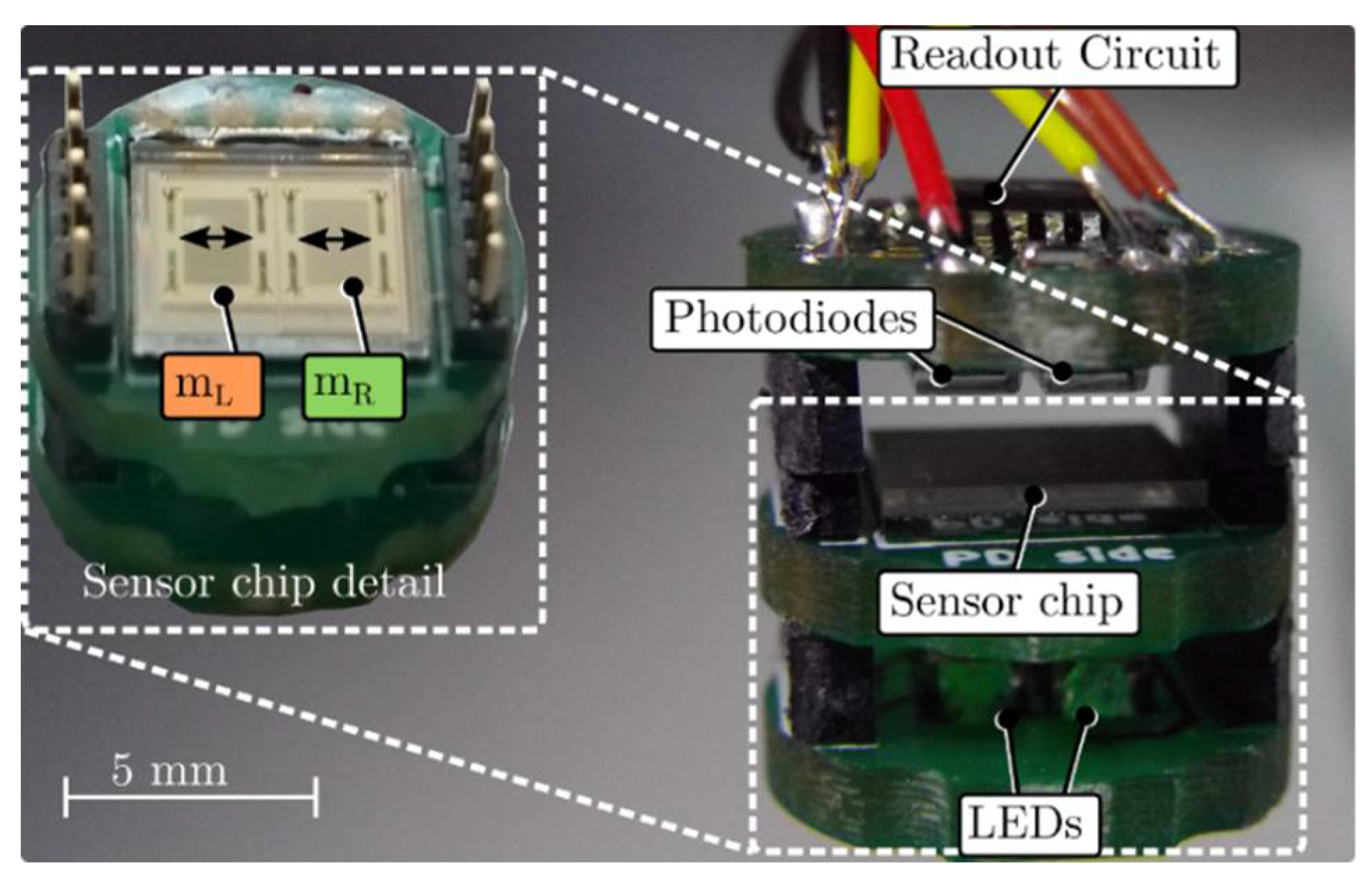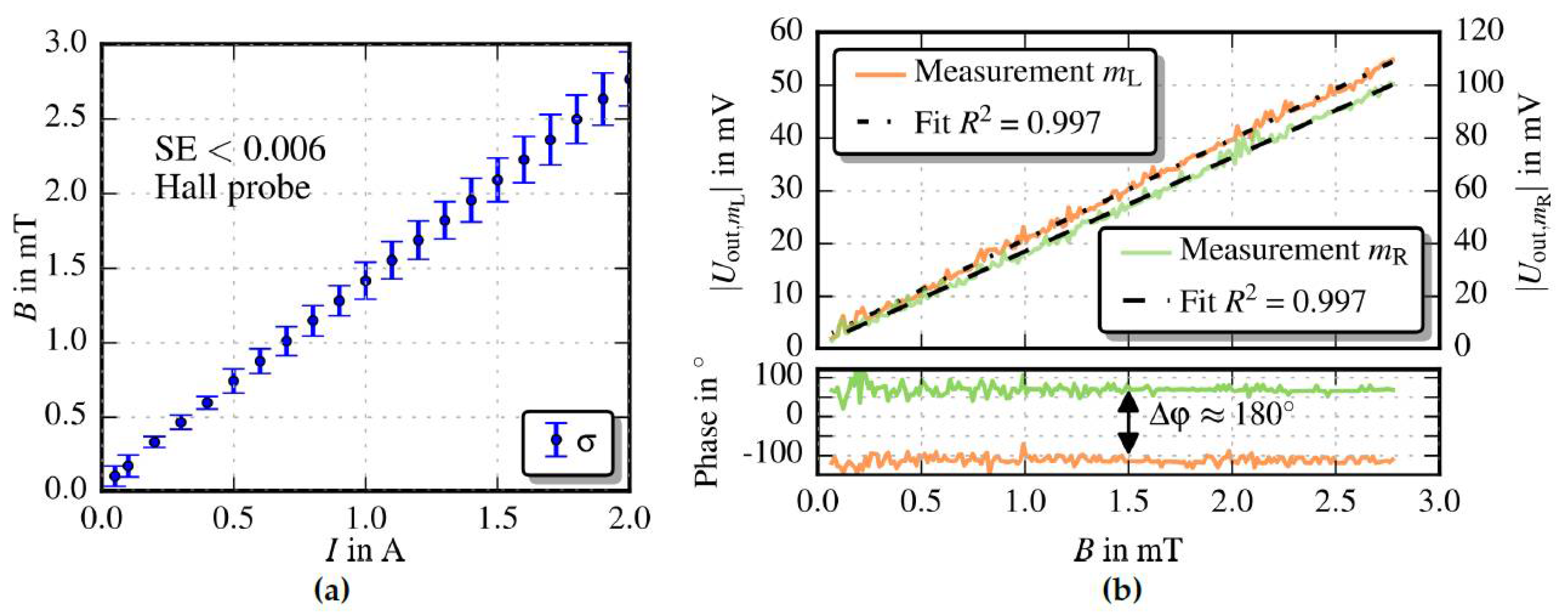Responsitivity Measurement of a Lorentz Force Transducer for Homogeneous and Inhomogeneous Magnetic Fields †
Abstract
:1. Introduction
2. Sensing Principle
3. Measurement Set-Up
4. Results
5. Conclusions
Author Contributions
Acknowledgments
Conflicts of Interest
References
- Herrera-May, A.; Soler-Balcazar, J.; Vázquez-Leal, H.; Martínez-Castillo, J.; Vigueras-Zuñiga, M.; Aguilera-Cortés, L. Recent Advances of MEMS Resonators for Lorentz Force Based Magnetic Field Sensors: Design, Applications and Challenges. Sensors 2016, 16, 1359. [Google Scholar] [CrossRef] [PubMed]
- Stifter, M.; Steiner, H.; Hortschitz, W.; Sauter, T.; Glatzl, T.; Dabsch, A.; Keplinger, F. MEMS micro-wire magnetic field detection method@CERN. IEEE Sens. 2015, 7, 1–4. [Google Scholar] [CrossRef]
- Dabsch, A.; Rosenberg, C.; Stifter, M.; Keplinger, F. MEMS cantilever based magnetic field gradient sensor. J. Micromech. Microeng. 2017, 27, 960–1317. [Google Scholar] [CrossRef]
- Hortschitz, W.; Steiner, H.; Stifter, M.; Kainz, A.; Kohl, F.; Siedler, C.; Schalko, J.; Keplinger, F. Novel MOEMS Lorentz Force Transducer for Magnetic Fields. Procedia Eng. 2016, 168, 680–683. [Google Scholar] [CrossRef]
- Hortschitz, W.; Steiner, H.; Sachse, M.; Stifter, M.; Kohl, F.; Schalko, J.; Jachimowicz, A.; Keplinger, F.; Sauter, T. Robust Precision Position Detection with an Optical MEMS Hybrid Device. IEEE Trans. Ind. Electron. 2012, 59, 4855–4862. [Google Scholar] [CrossRef]
- Hortschitz, W.; Steiner, H.; Stifter, M.; Kohl, F.; Kahr, M.; Kainz, A.; Raffelsberger, T.; Keplinger, F. Novel high resolution MOEMS inclination sensor. In Proceedings of the IEEE SENSORS 2014, Valencia, Spain, 2–5 November 2014; pp. 1893–1896. [Google Scholar] [CrossRef]




Publisher’s Note: MDPI stays neutral with regard to jurisdictional claims in published maps and institutional affiliations. |
© 2018 by the authors. Licensee MDPI, Basel, Switzerland. This article is an open access article distributed under the terms and conditions of the Creative Commons Attribution (CC BY) license (https://creativecommons.org/licenses/by/4.0/).
Share and Cite
Kahr, M.; Stifter, M.; Steiner, H.; Hortschitz, W.; Kovacs, G.; Kainz, A.; Schalko, J.; Keplinger, F. Responsitivity Measurement of a Lorentz Force Transducer for Homogeneous and Inhomogeneous Magnetic Fields. Proceedings 2018, 2, 843. https://doi.org/10.3390/proceedings2130843
Kahr M, Stifter M, Steiner H, Hortschitz W, Kovacs G, Kainz A, Schalko J, Keplinger F. Responsitivity Measurement of a Lorentz Force Transducer for Homogeneous and Inhomogeneous Magnetic Fields. Proceedings. 2018; 2(13):843. https://doi.org/10.3390/proceedings2130843
Chicago/Turabian StyleKahr, Matthias, Michael Stifter, Harald Steiner, Wilfried Hortschitz, Gabor Kovacs, Andreas Kainz, Johannes Schalko, and Franz Keplinger. 2018. "Responsitivity Measurement of a Lorentz Force Transducer for Homogeneous and Inhomogeneous Magnetic Fields" Proceedings 2, no. 13: 843. https://doi.org/10.3390/proceedings2130843
APA StyleKahr, M., Stifter, M., Steiner, H., Hortschitz, W., Kovacs, G., Kainz, A., Schalko, J., & Keplinger, F. (2018). Responsitivity Measurement of a Lorentz Force Transducer for Homogeneous and Inhomogeneous Magnetic Fields. Proceedings, 2(13), 843. https://doi.org/10.3390/proceedings2130843




